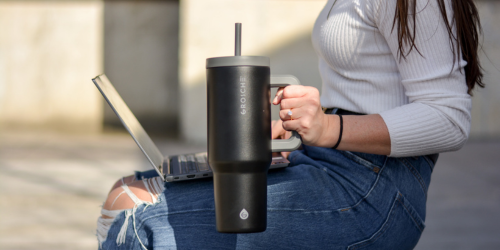When people think of green tea, they often picture just one type. But not all green teas are the same. Among the wide varieties, Sencha green tea stands out. It's the most popular tea in Japan, and for good reason. We're going to discuss Sencha's origins, what makes this tea so special, its benefits, its differences from other teas, and how to prepare a delicious cup of Sencha green tea.
A Quick Look at Sencha's Origins
Sencha was introduced to Japan in the 17th century; its simplicity in preparation and the fresh, bright taste it offered shifted the tea culture from powdered matcha to loose-leaf brewing. Today, over 80% of Japan's tea production is Sencha kind. Its production process is quite interesting: it has to grow under full sunlight, and then the youngest tea leaves are carefully collected, boiled, rolled, and dried to preserve their colour, flavour, and general nutrients, guaranteeing a unique experience of taste and quality.
What Makes Sencha So Special?
Its secret lies in how it's produced. By preventing oxidation early through steaming, Sencha keeps its antioxidant-rich profile intact. The final product is a delicate, needle-like leaf that brews into a vibrant green tea with a grassy aroma and refreshing taste.
6 benefits of drinking sencha green tea

The benefits of drinking Sencha green tea go beyond being a delicious beverage. Let's dive deep into the world of the benefits of this delightful tea.
An organic Japanese Sencha tea with a superb light colour, rich notes of mellow grass and hints of honey. SHOP NOW
1. Full of antioxidants:
Sencha is packed with catechins, especially epigallocatechin gallate (EGCG), a powerful antioxidant known for reducing oxidative stress and cellular damage. These elements help neutralize free radicals, reducing the risk of various diseases, including some types of cancer.
2. Supports Weight Control:
Looking for a gentle metabolism booster? Sencha's caffeine and catechins work together to support fat oxidation and enhance energy expenditure, particularly when combined with exercise.
Source: The Journal of Nutrition, 2008
3. Strengthens the Immune System
With natural vitamin C and antioxidants, Sencha helps your body fight off infections. It may also help shorten the duration of colds and support white blood cell production.
4. Promotes Heart Health:
Drinking Sencha regularly could help lower LDL ("bad") cholesterol and support healthy blood pressure levels; these are two key markers associated with heart health.
5. Enhances Focus:
Sencha contains both caffeine and L-theanine, a natural amino acid that promotes calm alertness. It provides a balanced energy boost, which is ideal for staying focused and relaxed throughout a busy day.
6. Naturally Supports Oral Health:
Thanks to its fluoride and antimicrobial properties, Sencha can help reduce bad breath, gum inflammation and cavities. A daily cup may be a simple step toward a healthier smile.
Extra Benefits You'll Love
Hydration & Skin Health:
Sencha helps keep you hydrated, and its antioxidants can support a clearer, more radiant complexion.
Mood Boost:
The theanine and polyphenols in Sencha are linked to reduced stress and a better mood, making it perfect for a mindful break.
Sencha Tea vs. Matcha
Both matcha and sencha are very popular types of teas, so we thought we would compare the two. We’re going to be looking at matcha powder vs. sencha loose leaf to see which one tastes better and which is better for you. To start, as mentioned before, sencha is grown in the sun, but matcha is grown in the shade. This makes a difference in the properties of each tea. Sencha has more catechin antioxidants because of the sun, while matcha has more caffeine and theanine from less sun. Both are healthy tea options, but from these facts, you can choose what you want more of.
In terms of taste, sencha green tea has an uplifting and refreshing taste to it. Resulting in a nutty/fruity aftertaste, which makes it great for iced tea. For matcha, the taste is smooth and savory with not much of an aftertaste. Both teas have somewhat of an earthy taste to them, however. In terms of color, sencha is more of a dark green, while matcha tea powder is bright green.
How to Prepare Sencha Green Tea
Here's a simple recipe to enjoy Sencha the traditional way:
You'll need:
1 tsp loose-leaf Sencha (per cup)
Hot water (not boiling – about 75–80°C or 170–175°F)
Steps:
Add Sencha to your teapot.
Pour hot water gently over the leaves.
Steep for 1–2 minutes.
Strain and serve. Enjoy it plain, or you can add a slice of lemon for extra freshness!
Pro tip: Use the same leaves for up to 3 steeps. The flavour changes slightly with each one, making every cup an experience.
Bring Sencha Into Your Daily Ritual
Enjoying the benefits of drinking Sencha green tea isn't just a health choice, it's a moment of peace in your day. Whether you're looking for clarity in the morning or calm in the afternoon, our premium Sencha blends are here for you.
Ready to upgrade your tea time? Explore our selection of Sencha teas and find your perfect match.



Leave a comment
This site is protected by hCaptcha and the hCaptcha Privacy Policy and Terms of Service apply.